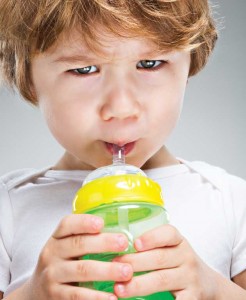The Scary New Evidence on BPA-Free Plastics; And the Big Tobacco-style Campaign to Bury It
From the Article by Mariah Blake, Mother Jones Magazine, March/April 2014 Issue
Note on (3/3/14): After this story went to press, the US Food and Drug Administration published a paper finding that BPA was safe in low doses. However, due to laboratory contamination, all of the animals—including the control group—were exposed to this chemical. Academic scientists say this raises serious questions about the study’s credibility. Stay tuned for more in-depth reporting on the FDA’s most recent study.
Each night at dinnertime, a familiar ritual played out in Michael Green’s home: He’d slide a stainless steel sippy cup across the table to his two-year-old daughter, Juliette, and she’d howl for the pink plastic one. Often, Green gave in. But he had a nagging feeling. As an environmental-health advocate, he had fought to rid sippy cups and baby bottles of the common plastic additive bisphenol A (BPA), which mimics the hormone estrogen and has been linked to a long list of serious health problems.
Juliette’s sippy cup was made from a new generation of BPA-free plastics, but Green, who runs the Oakland, California-based Center for Environmental Health, had come across research suggesting some of these contained synthetic estrogens, too.
He pondered these findings as the center prepared for its anniversary celebration in October 2011. That evening, Green, a slight man with scruffy blond hair and pale-blue eyes, took the stage and set Juliette’s sippy cups on the podium. He recounted their nightly standoffs.
“When she wins…every time I worry about what are the health impacts of the chemicals leaching out of that sippy cup,” he said, before listing some of the problems linked to those chemicals—cancer, diabetes, obesity. To help solve the riddle, he said, his organization planned to test BPA-free sippy cups for estrogenlike chemicals.
The center shipped Juliette’s plastic cup, along with 17 others purchased from Target, Walmart, and Babies R Us, to CertiChem, a lab in Austin, Texas. More than a quarter—including Juliette’s—came back positive for estrogenic activity. These results mirrored the lab’s findings in its broader National Institutes of Health-funded research on BPA-free plastics. CertiChem and its founder, George Bittner, who is also a professor of neurobiology at the University of Texas-Austin, had recently coauthored a paper in the NIH journal Environmental Health Perspectives.
It reported that “almost all” commercially available plastics that were tested leached synthetic estrogens—even when they weren’t exposed to conditions known to unlock potentially harmful chemicals, such as the heat of a microwave, the steam of a dishwasher, or the sun’s ultraviolet rays. According to Bittner’s research, some BPA-free products actually released synthetic estrogens that were more potent than BPA.
>>>>>>>>>>>>>>>>>>>>>>
NOTE: The Physicians for Social Responsibility have created an infographic to summarize what is known about the products and chemicals used in fracking and their known effects on human health and the environment. Click here to download the infographic (PDF).

